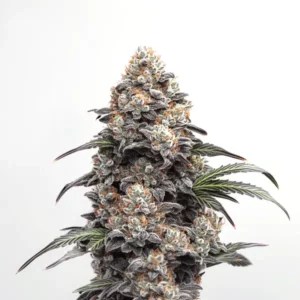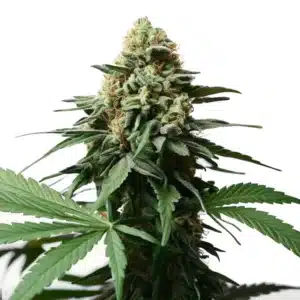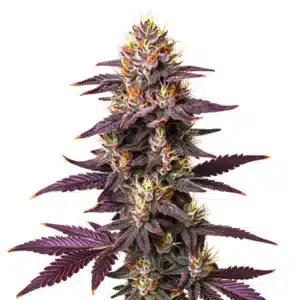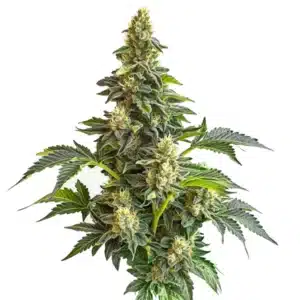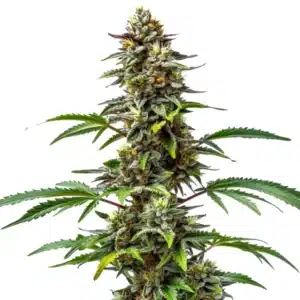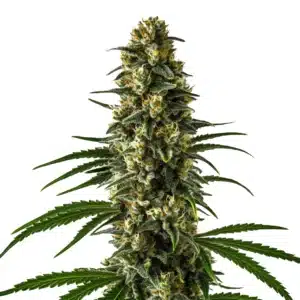
Best Bloom Fertilizer for Pot Plants
Growing pot plants can be a rewarding experience, especially when they bloom beautifully. A big part of encouraging healthy blooms lies in what fertilizers you choose. Using the best bloom fertilizer for pot plants can help your plants thrive during their flowering phase, enhancing both the quality and quantity of buds. Below, we explore the best options available, tips for using them, and some common questions you may have.
What is Bloom Fertilizer?
The best bloom fertilizer for pot plants is specially formulated to support plants during their flowering stage. Unlike vegetative fertilizers, which are high in nitrogen to promote leafy growth, bloom fertilizers have a different nutrient profile. They typically contain higher levels of phosphorus and potassium, which are essential for flower development.
Recommended Strains
Alien GG
|
|
THC | 23% - 24% (Medium) |
|
|
Type | Feminized |
|
|
Yield | High |
|
|
Phenotype | 70% Indica / 30% Sativa |
Gorilla Grapefruit
|
|
THC | 22% - 24% (Medium) |
|
|
Type | Feminized |
|
|
Yield | Medium |
|
|
Phenotype | 75% Indica / 25% Sativa |
Phosphorus aids in flower formation, while potassium helps strengthen plant cells, resulting in sturdier stems and more vibrant blooms. When choosing a bloom fertilizer, it’s essential to read the nutrient ratio on the packaging. Most bloom fertilizers will display an N-P-K value, where N is nitrogen, P is phosphorus, and K is potassium.
Think of bloom fertilizers as a special diet for your plants during the most crucial time of their growth cycle. Just like how we might adjust our diet to fit specific health goals, these fertilizers provide the vital nutrients that encourage robust flowering.
Understanding this transition zone is crucial for any grower. Just as the seasons change and require different clothing, your plants require a shift in nutrient input when they move from vegetative growth to their blossoming phase.
Top Bloom Fertilizers
There are numerous bloom fertilizers available on the market, each with unique strengths. Below is a selection of some of the best bloom fertilizers for pot plants:
- FoxFarm Tiger Bloom: Known for its potent formula, this fertilizer promotes strong flowering and robust crop yields.
- Advanced Nutrients Big Bud: This fertilizer boosts flower production significantly and is enriched with essential amino acids.
- General Hydroponics Flora Series: This three-part system allows growers to customize their nutrient ratios, making it a versatile option for different growth stages.
Each of these fertilizers caters to various growing conditions and plants. Choosing the right one can depend on your specific needs and preferences as a grower.
For example, if you’re growing your plants indoors, FoxFarm Tiger Bloom might be your best bet due to its effectiveness in smaller, controlled environments and its reputation as one of the best bloom fertilizer for pot plants. Conversely, if you’re cultivating outside, the Advanced Nutrients Big Bud’s robust formula can help tackle the challenges of outdoor conditions, making it another strong contender for the best bloom fertilizer for pot plants in outdoor gardens.
Promos & Deals
How to Use Bloom Fertilizer
Applying bloom fertilizer is straightforward but can impact your flowers significantly. Here are some practical steps to ensure you get the best results:
- Start applying bloom fertilizer when plants switch to the flowering stage. This can typically be around week three of the flowering cycle.
- Follow the manufacturer’s instructions regarding dosage. Over-fertilizing can lead to nutrient burn, which harms your plants.
- Water thoroughly after applying fertilizer. This helps to distribute the nutrients evenly throughout the soil.
- Monitor your plants for signs of nutrient deficiencies or excesses. Adjust your feeding schedule based on how your plants respond.
Consistent observation allows you to make informed decisions regarding fertilization and ensures that your plants receive exactly what they need during the flowering stage.
It’s beneficial to keep a journal. Document each feeding date and the plant’s responses; this practice helps you learn what works and what doesn’t in your unique growing setup.
Consider the analogy of cooking your favorite dish. Following a recipe correctly can lead to amazing results, but minor adjustments based on previous experiences will refine your outcome even further.
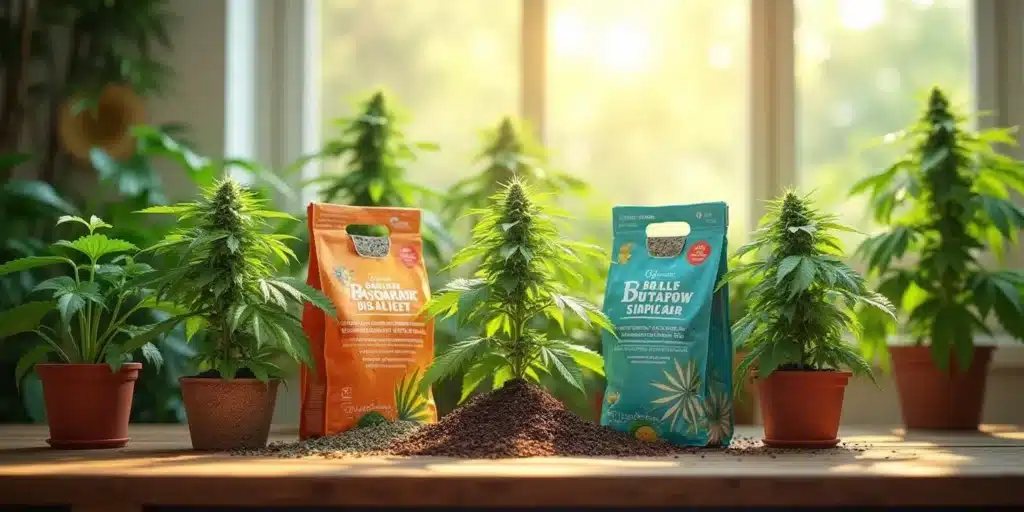
Organic vs. Synthetic Fertilizers
When selecting a bloom fertilizer, you have the choice between organic and synthetic options. Both have their pros and cons, so evaluating your growing goals is essential.
Organic fertilizers are derived from natural sources, such as compost or plant materials. They usually improve soil health over time and can lead to richer flavors. However, they may take longer to show results compared to synthetic fertilizers.
Think of organic fertilizers as the slow-cooking method for your plants. Like how a hearty stew develops deeper flavors over time, organic fertilizers enrich the soil gradually, providing long-term benefits.
On the flip side, synthetic fertilizers are formulated with precise nutrient ratios for rapid absorption. They often deliver quicker results, which is beneficial if you’re looking for immediate improvements. However, it’s crucial to use them responsibly to prevent soil degradation in the long run.
Choosing the Right Fertilizer for Your Strain
The cannabis strain you choose to grow can also influence your fertilizer selection. Certain strains may respond better to specific nutrient profiles. For instance:
- Gorilla Glue: This hybrid strain thrives with high phosphorus during flowering, supporting its heavy buds.
- Blue Dream: Known for its balanced structure, it benefits from a nutrient mix that includes potassium for strong growth and stability.
- Girl Scout Cookies: This popular strain often flourishes with bloom fertilizers rich in micronutrients to enhance flavor and aroma.
Understanding the nutritional needs of your chosen strain can improve your overall yield and the quality of your harvest.
It’s like recognizing family members’ favorite foods during holiday dinners; knowing what works best can lead to a feast! The more you learn about your plants, the more successful your growing endeavors will be.
Managing Environmental Factors
The environment in which your pot plants grow also affects how well bloom fertilizers perform. Light, temperature, and humidity play significant roles in a plant’s nutrient absorption. For example, plants require more nutrients when exposed to optimal light conditions.
When growers provide a steady light source, it’s reminiscent of the care we provide to our pets, they thrive under the right conditions! Maintaining the correct temperature and humidity levels ensures that your plants are not stressed and can absorb nutrients effectively.
In environments that mimic natural conditions, like greenhouses, your plants will not only absorb nutrients better but also respond more favorably to fertilizers. Keeping grow spaces clean can create an ideal environment, just as a tidy home can foster a more relaxed atmosphere.
Common Mistakes to Avoid
While using bloom fertilizers can yield impressive results, some common mistakes can hinder your success.
- Over-fertilizing: Many growers think more fertilizer equals better growth. However, this is inaccurate and can cause nutrient burn, leading to stress and lower yields.
- Ignoring Plant Signs: Monitoring your plants regularly is crucial. Yellowing leaves or stunted growth may signal nutrient problems that could worsen with inappropriate fertilizer use.
- Improper Timing: Applying bloom fertilizer too early or too late in the flowering cycle can impact flower development. It’s vital to be aware of the right timing.
By being mindful of these potential pitfalls, you can ensure that your plants receive the right care and support during their blooming phase.
Many growers have learned the hard way that being generous with fertilizer doesn’t always equate to a better yield. A balanced feeding regimen is often the key to healthy plants.
Adopting a patient approach, relying on observation and flexibility with nutrient delivery, can be the winning strategy. After all, just as in life, we’ve all seen that good things take time to develop!

Combining Nutrients for Best Results
Sometimes, using bloom fertilizers in conjunction with other products can offer even better support for your plants. For instance, combining a bloom fertilizer with a root booster can enhance nutrient uptake, leading to more vibrant flowers.
Microbial products can also benefit your plants. They help break down nutrients in the soil, making them more accessible. However, be cautious when mixing various fertilizers, as some combinations may not be compatible and could cause nutrient lockout.
It’s not unlike baking a cake, you need the right ingredients in the right amounts to ensure the best flavor and texture. Each addition can complement the others, leading to ultimate satisfaction!
Also, remember that continuous education is your ally. Stay updated with the latest practices and research to keep your gardening game strong.
FAQs
How often should I apply bloom fertilizer?
The frequency of bloom fertilizer application depends on the specific product and your plants’ needs. Generally, applying fertilizer every 1-2 weeks during the flowering phase works well. Always refer to the manufacturer’s instructions for the best results.
Think of it as getting regular check-ups at the doctor; consistency is key for your plants’ overall health and thriving!
Can I use bloom fertilizer on my vegetables?
Bloom fertilizers are designed specifically for flowering plants. While they may benefit flowering vegetables, consider using a balanced fertilizer or one specifically made for vegetables to ensure your plants receive the right nutrients.
Using the right fertilizer for the right crop is akin to wearing the right shoes for a sport; it helps you perform at your best!
What are the signs of nutrient deficiency in pot plants?
Signs of nutrient deficiency include yellowing leaves, stunted growth, or poor flower development. Each deficiency has its specific symptoms, so closely observe your plants to identify any issues early on.
Regular scans of your greens can help catch problems before they escalate, much like keeping an eye on your car dashboard for warning lights!
Is it necessary to flush my plants before harvest?
Flushing your plants before harvest is often recommended. This process involves watering your plants with plain water for about one to two weeks before you plan to harvest. Flushing helps remove any excess nutrients, resulting in smoother-tasting blooms.
Consider it a gentle detox for your plants that can enhance their final performance, much like we might do before a big event to feel our best!
Are there organic bloom fertilizers available?
Yes, many organic bloom fertilizers are on the market today. Options include fish emulsion, bone meal, and bat guano. These can promote healthy blooms while improving soil quality over time.
Choosing organic options allows you to contribute positively to the ecosystem, much like choosing reusable items instead of single-use products in our daily lives.


